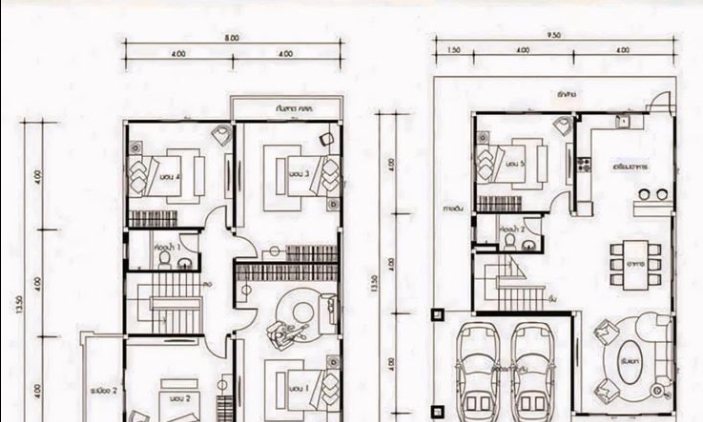Shed Demolition and Removal: A Guide to Clearing Your Space
7 Min read
)
August 28, 2024
Whether your old shed has seen better days, or you simply need to clear some space for a new project, shed demolition and removal can be a daunting task. It’s not just about knocking down a structure-it involves careful planning, the right tools, and an understanding of how to safely and efficiently remove the debris.
Step 1: Planning and Preparation
Before you grab a sledgehammer, proper planning is essential to ensure the demolition process goes smoothly and safely.
Assess the Shed
Consideration: Take a close look at the shed’s construction to understand its materials and condition. Is it made of wood, metal, or a combination of materials? Are there any hazardous substances like asbestos that you need to be aware of? Evaluating these aspects will help you determine the best approach for demolition.
Importance: Understanding the materials and structural integrity of the shed is crucial for planning the demolition process, ensuring you have the right tools and, if necessary, professional assistance, especially when dealing with hazardous materials like asbestos, which require specialized handling and disposal.
Gather Necessary Permits
Consideration: Depending on your location, you may need to secure a permit for the demolition, particularly if the shed is large or located close to other structures. It’s important to check with your local building department to ensure compliance with regulations.
Importance: Obtaining the proper permits is not just a legal requirement but also a safeguard against potential fines and legal complications. It ensures that your demolition project meets local building codes and safety standards, helping to avoid any interruptions or penalties.
Plan for Waste Disposal
Consideration: Decide how you will handle the debris generated by the demolition. Will you rent a dumpster, haul the waste yourself, or hire a junk removal service? Planning for waste disposal in advance will streamline the cleanup process.
Importance: Efficient waste disposal is essential for keeping the demolition site organized and safe. A clear plan for debris management helps prevent hazardous conditions, ensures that materials are disposed of responsibly, and can even reduce costs if recycling options are available.
Clear the Area
Consideration: Before beginning the demolition, remove all items from the shed and clear the surrounding area of any obstacles. This includes disconnecting utilities like electricity, gas, or water if they are connected to the shed, as well as removing nearby objects or vegetation that could interfere with the work.
Importance: A clear and obstacle-free work area is crucial for safety and efficiency. Removing potential hazards and ensuring that utilities are properly disconnected prevents accidents and damage to nearby structures or landscaping, creating a safer environment for the demolition team.
Gather Tools and Safety Gear
Consideration: Depending on the materials used in the shed’s construction, you’ll need specific tools such as a hammer, crowbar, saw, and sledgehammer. Additionally, safety gear including gloves, safety glasses, a dust mask, and sturdy footwear is essential to protect yourself during the demolition.
Importance: Having the right tools and safety gear not only protects you from potential injuries but also makes the demolition process more efficient. Proper preparation ensures that you can handle the shed's materials safely and effectively, reducing the risk of accidents or delays.
Step 2: Shed Demolition
With your plan in place, it’s time to start the demolition process. Here’s how to break down the shed step by step:
Remove Doors and Windows
Process: Begin by removing any doors, windows, and other fixtures from the shed. This usually involves unscrewing hinges, prying out frames with a crowbar, or carefully removing glass panes to prevent breakage.
Importance: Removing doors and windows first makes the structure easier to dismantle and reduces the risk of injury from broken glass or falling objects. It also allows you to work more safely and efficiently, ensuring that the shed remains stable while you proceed with the demolition.
Dismantle the Roof
Process: Once the doors and windows are removed, move on to dismantling the roof. If the roof is shingled, start by removing the shingles with a roofing shovel or pry bar. Afterward, take down the underlying structure, which may involve removing nails or screws that hold the rafters or panels in place.
Importance: Starting with the roof is crucial as it reduces the risk of the structure collapsing unexpectedly. Safely removing the roof first allows you to work on the walls without the danger of heavy materials falling, ensuring a controlled and orderly demolition process.
Tear Down the Walls
Process: With the roof removed, focus on dismantling the walls. If the shed is made of wood, you can use a hammer or sledgehammer to knock down the walls, starting from the top and working your way down. For sheds made of metal or other materials, you may need to use a saw to cut through the panels.
Importance: Dismantling the walls after the roof is essential for maintaining the structure’s stability throughout the demolition. This methodical approach minimizes the risk of the shed collapsing unexpectedly and allows you to control the process, ensuring safety and efficiency.
Remove the Floor
Process: After the walls are down, turn your attention to the floor. Depending on the shed’s construction, this may involve prying up wooden floorboards or dismantling a concrete slab. Use appropriate tools to ensure the floor is completely removed and the area is left clean and level.
Importance: Removing the floor last helps contain debris during the demolition and provides a stable surface to work on, making it easier to manage the cleanup. This step also ensures that the site is fully cleared, allowing you to prepare it for future use or construction.
Step 3: Cleanup and Disposal
With the shed dismantled, the final step is to clean up the site and dispose of the debris.
Sort and Separate Materials
Process: As you clean up, separate materials like wood, metal, and glass for recycling where possible. If there are hazardous materials such as asbestos, ensure they are handled according to local regulations and disposed of in an environmentally responsible manner.
Importance: Sorting materials for recycling not only reduces the amount of waste sent to landfills but can also save money by allowing you to recycle valuable materials. Proper disposal of hazardous materials is crucial for protecting the environment and ensuring compliance with legal requirements.
Load Debris for Disposal
Process: Load the debris into your chosen disposal method, whether it’s a rented dumpster, a trailer, or a truck. Make sure the load is secure before transporting it to a disposal or recycling facility to prevent spills or accidents during transit.
Importance: Securing the debris properly ensures that it is transported safely and efficiently, preventing hazards on the road and avoiding fines for improperly secured loads. Proper disposal is key to completing the project responsibly and in accordance with local regulations.
Inspect and Clean the Site
Process: Once the debris is removed, inspect the site for any remaining nails, screws, or other hazards. Use a magnet or metal detector if necessary to ensure nothing is left behind. After the site is clear of hazards, sweep or rake the area to leave it clean and ready for the next project.
Importance: A thorough site cleanup is essential to ensure safety and prepare the area for future use. Removing all debris and potential hazards prevents accidents and provides a clean slate for whatever project comes next, whether it’s new construction, landscaping, or simply restoring the area to its natural state.
Shed demolition and removal may seem like a daunting task, but with careful planning, the right tools, and a systematic approach, it’s a project that can be completed safely and efficiently. Whether you’re clearing space for a new shed, garden, or something entirely different, following these steps will help you get the job done right.
For more tips on DIY projects, demolition, and construction, visit our Boom & Bucket blog. We’re here to support you with expert advice and the latest industry insights, no matter how big or small your project may be.

Rex Walz is Boom & Bucket's Manager of Supplier Relations, bringing over a decade of experience in B2B sales and heavy equipment solutions. With a background spanning government, construction, industrial, and commercial sectors, he has a proven track record of driving growth and building trusted customer relationships. At Boom & Bucket, Rex is passionate about helping partners succeed while advancing the company's mission to create the most trusted marketplace for heavy equipment.














